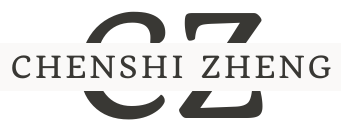In a world that seems to change faster than a cat video goes viral, understanding the future can feel like trying to predict the weather in a tornado. Enter the foresight framework—a powerful tool that helps organizations anticipate trends and navigate uncertainty like seasoned navigators in a stormy sea.
Table of Contents
ToggleUnderstanding Foresight Framework
The foresight framework aids organizations in anticipating trends and managing uncertainty in ever-changing environments. This structured approach facilitates informed decision-making, enabling leaders to navigate complexities effectively.
Definition of Foresight Framework
A foresight framework comprises methodologies and tools that enable organizations to analyze potential futures. It emphasizes understanding emerging trends, assessing uncertainties, and fostering strategic discussions. By leveraging various scenarios, teams can develop actionable insights, thereby enhancing adaptability and resilience.
Importance of Foresight in Strategic Planning
Foresight plays a crucial role in strategic planning by providing clarity and direction. Organizations benefit from identifying shifts in consumer behavior or technological advancements. It equips leaders to make proactive decisions, reducing risks associated with unforeseen challenges. Engaging in foresight encourages collaborative thinking, ensuring all stakeholders contribute to long-term goals. This process fosters innovation while aligning initiatives with future possibilities.
Key Components of Foresight Framework

Key components of the foresight framework enable organizations to anticipate changes effectively. Below are three critical elements that contribute to its success.
Environmental Scanning
Environmental scanning involves continuously monitoring external factors influencing an organization’s landscape. This process identifies trends, emerging technologies, and social shifts that might impact future scenarios. Regularly analyzing competitors also provides insights into market dynamics. Organizations should utilize data sources, expert opinions, and industry reports to gather relevant information. By recognizing both opportunities and threats, organizations enhance their strategic planning efforts.
Scenario Planning
Scenario planning creates various plausible futures based on current data and identified trends. This technique allows organizations to explore different possibilities and assess potential impacts on operations. By developing multiple scenarios, teams can prepare for uncertain environments and devise strategic responses. Effective scenario planning incorporates quantitative and qualitative analysis, ensuring a comprehensive understanding of challenges. Engaging in this activity improves decision-making and strengthens resilience against unexpected developments.
Stakeholder Engagement
Stakeholder engagement fosters collaboration among individuals affected by organizational decisions. Involving these stakeholders provides diverse perspectives, enhancing the foresight process. Engaged stakeholders contribute valuable insights derived from their experiences and expertise. Organizations should prioritize communication channels to effectively share information and gather feedback. This collaborative approach creates a shared understanding of potential futures, ultimately leading to more informed and strategic outcomes.
Applications of Foresight Framework
The foresight framework finds applications across various domains, enhancing adaptability and strategic thinking.
Business Strategy Development
In business strategy development, the foresight framework assists organizations in identifying market trends. It drives discussions around potential future scenarios, enabling companies to align their goals with anticipated changes in the industry. Utilizing tools like environmental scanning and scenario planning, teams can analyze competitors and consumer behaviors. This approach strengthens decision-making processes and promotes innovation, ultimately leading to competitive advantages. Examples of successful implementation include major corporations that adapted their product lines in response to emerging technologies and shifting consumer demands. Strategic insights derived from the framework enhance overall organizational agility, making it easier for companies to navigate uncertainties.
Public Policy Formulation
Public policy formulation benefits from the foresight framework by providing evidence-based insights into societal trends. Policymakers leverage scenario planning to evaluate potential impacts of legislation on various demographics. Departmental collaboration ensures diverse perspectives inform future initiatives, fostering community engagement. Analyzing data from environmental scanning allows public agencies to identify pressing issues like climate change or economic shifts. Successful examples include national strategies that address public health crises by anticipating future challenges. Engaging stakeholders in discussions about the implications of policy decisions creates transparency and builds trust within communities.
Technology Forecasting
Technology forecasting utilizes the foresight framework to predict advancements and their societal implications. Organizations employ environmental scanning to monitor emerging technologies and assess their potential impact on operations. Scenario planning facilitates strategic discussions about the role of technology in business models and industry standards. Analyzing research and development trends allows teams to prioritize investments in innovative solutions. Companies that effectively implement this framework can anticipate disruptive technologies, enabling them to remain competitive. For instance, advancements in artificial intelligence prompt organizations to rethink workflows and enhance efficiency across sectors.
Challenges and Limitations
The foresight framework faces several challenges and limitations that can impact its effectiveness.
Data Quality Issues
Data quality plays a crucial role in the success of the foresight framework. Poor data can lead to inaccurate predictions and flawed strategic decisions. Inaccuracies arise from outdated, incomplete, or biased information, distorting the assessment of trends and scenarios. Organizations reliant on insufficient data often miss critical insights, hindering their ability to adapt to changes. Maintaining high-quality data through rigorous validation processes and regular updates strengthens the reliability of insights derived from the framework. Investing in robust data collection methods enhances the overall effectiveness of strategic planning.
Resistance to Change
Resistance to change poses a significant barrier when implementing the foresight framework. Stakeholders often feel hesitant to adopt new methodologies, which may challenge established processes. Individuals may cling to familiar practices, fearing disruption caused by innovative approaches. Engaging stakeholders through education can help alleviate these concerns, promoting buy-in and collaboration. When organizations actively demonstrate the benefits of foresight, they cultivate a culture of openness and adaptability. This shift in mindset is vital for successfully navigating complex uncertainties and embracing emerging opportunities.
Conclusion
The foresight framework is an invaluable asset for organizations striving to thrive in uncertainty. By incorporating methodologies like environmental scanning and scenario planning, teams can navigate the complexities of the future with confidence. This proactive approach not only enhances strategic decision-making but also fosters innovation and resilience.
Embracing the foresight framework encourages a culture of adaptability that prepares organizations for emerging trends and challenges. As they engage stakeholders and prioritize high-quality data, they can turn potential obstacles into opportunities for growth. Ultimately, leveraging this framework positions organizations to not just survive but excel in an ever-evolving landscape.




